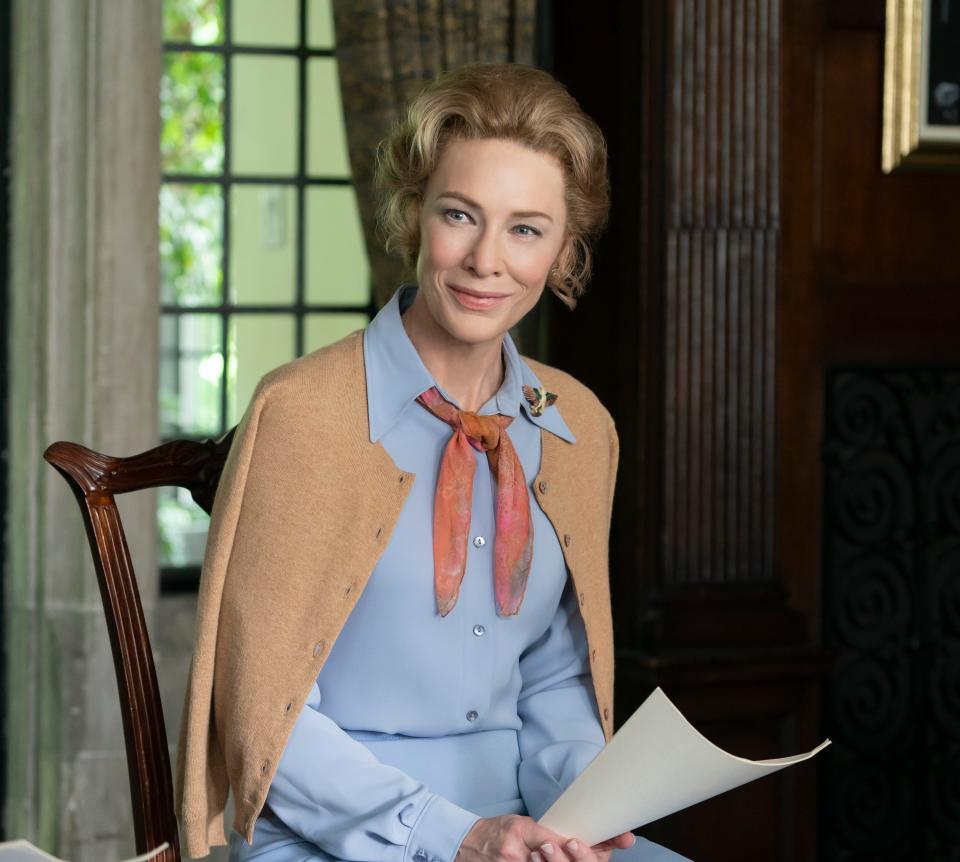'Mrs. America' shows how art can bridge our nation's cultural, partisan divisions
The recent FX series "Mrs. America" was widely praised as the best thing on television at the time. The show depicts the political fight to pass the Equal Rights Amendment to the U.S. Constitution in the 1970s.
The high-budget cable drama features many excellent performances, but its popularity and cultural notoriety stem from Cate Blanchett’s riveting portrayal of conservative antihero Phyllis Schlafly. Schlafly’s deft political skills and tireless organizing defeated the ERA and paved the way for the election of Ronald Reagan in 1980.
Blanchett, who coproduced the series, is an Australian progressive who admits that “Schlafly and I are, let’s say, two guests you wouldn’t invite to the same dinner party.” Yet, unlike other recent cinematic take downs of conservatives such as Dick Cheney, Roger Ailes and George W. Bush, Blanchett’s compelling depiction of Schlafly casts the anti-feminist activist in a sympathetic light.
The series has been accordingly critiqued by media commentators for not adequately demonizing Schlafly’s right-wing views. As one reviewer wrote: “It clearly sides politically with the feminist movement that Schlafly devoted her talents to stopping. But it can’t help but swoon at how Schlafly deployed those considerable talents to thwart that movement, because that makes for better drama.”

The problem seems to be that Blanchett herself makes common cause with her antihero, portraying Schlafly as a complex and even admirable character. As a result of Blanchett’s artistic talent and personal gravitas, Schlafly’s essential dignity and the sincerity of her traditional values shine through. While the script depicts Schlafly as an antihero, Blanchett’s empathetic portrayal prevents Schlafly from being meanly caricatured as a one-dimensional villain.
Art can bridge partisan gap
The resulting outrage over the show's failure to uphold Hollywood’s usual hyper-partisan narrative prompted Blanchett to write an op-ed for the New York Times defending her refusal to demonize Schlafly. Blanchett explains that the series aims “to create a unified social understanding rather than segregating ourselves based on misinterpretations and political disagreements.” She argues that art’s “ability to cross social, partisan and even temporal gaps can help foster a shared sense of understanding. It can bring us together physically and emotionally. And it can teach us about one another, inspiring empathy rather than anger. Art matters because it lets us engage with our complex social fabric, allowing us to cross divides and work toward a safer and more meaningful existence together.”
While the New York Times did well to publish Blanchett’s philosophical piece on the social responsibility of art, it nevertheless signaled its refusal to embrace her trans-partisanship sentiments. Among the op-ed’s 424 reader comments, the Times’ editors pinned as their “top pick” a cynical condemnation of Blanchett’s conclusions: “(Schlafly) was a terrible human being. It's not the ‘liberals’ responsibility to build bridges of understanding through art, dialog and essays in the nytimes.”
While I too condemn Schlafly’s politics, I strongly disagree that those of us on the left have no responsibility to help bridge the intense partisan divide that is poisoning American politics. The Republican Party’s moral failure in supporting Donald Trump leaves the Democrats as the only civically responsible party left standing. We thus have a duty to help overcome the hyperpolarization that fuels Trump’s presidency.
Polarization is a cultural problem
Hyperpolarization, however, is ultimately more of a cultural problem than a political one. By humanizing Schlafly, even as it plainly shows how politically wrong-headed she was, "Mrs. America" addresses our national schism at its cultural roots. Blanchett’s performance demonstrates a kind of “cultural intelligence” that reveals both the dignities and disasters of Schlafly’s traditional worldview. And by doing so it creates a cultural bridge that can help soften the left’s Manichean view of the dreaded right-wing.
Even as we remain staunchly opposed to Trump, we can nevertheless increase our cultural sympathy for the millions of otherwise good people who voted for him to counter the left’s invalidation of their values. And by bridging America’s partisan divide at a cultural level, we can reduce the right’s perception of progressivism’s cultural threat, and thus help sway November’s upcoming vote at the margins.
In their laudable attempts to bring about social justice, progressive artists and intellectuals have fanned the flames of the culture war that has made our democracy practically ungovernable. Progressive artists like Blanchett should therefore be commended for working to heal our national divisions. By helping to bridge our cultural divide, "Mrs. America" goes beyond vacuous entertainment and rises to the level of meaningful art.
Steve McIntosh is president of the Institute for Cultural Evolution, which focuses on the cultural roots of America's political problems. He is author of "Developmental Politics —How America Can Grow Into a Better Version of Itself." He is coauthor of "Conscious Leadership — Elevating Humanity Through Business."
You can read diverse opinions from our Board of Contributors and other writers on the Opinion front page, on Twitter @usatodayopinion and in our daily Opinion newsletter. To respond to a column, submit a comment to letters@usatoday.com.
This article originally appeared on USA TODAY: How art like 'Mrs. America' can help heal our cultural divide

